Japanese cuisine overview: what, where and why
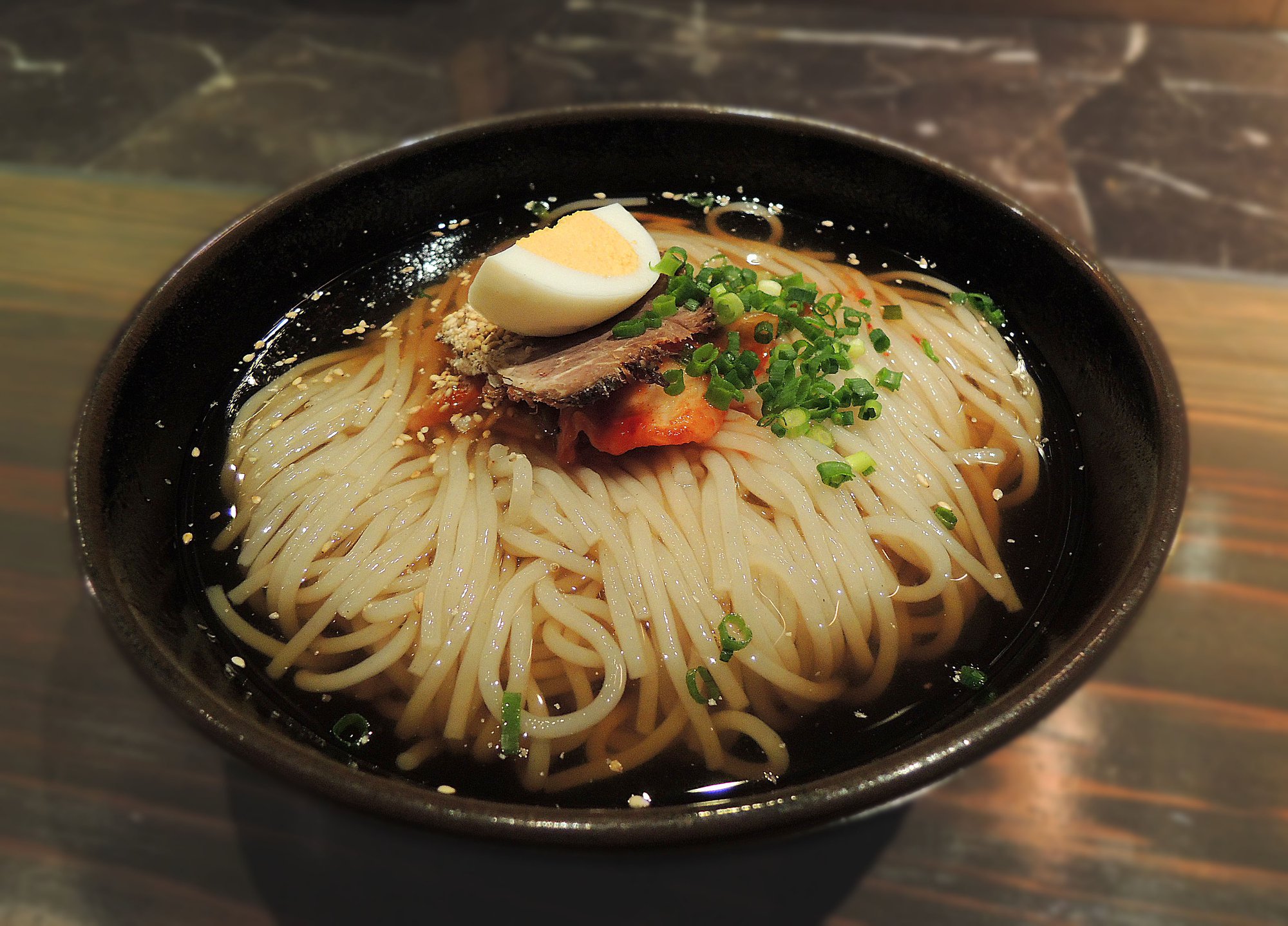
Japanese food is a big thing for most foreign visitors and for good reason. Things like world-class Kobe beef, tempura, sushi, and ramen are just a few of the cuisine types people actively seek out when traveling in Japan. But there are so many Japanese cuisine types, and most of them are more or less unknown to foreigners. Examples include kushiyaki, oden hot pot, Buddhist vegetarian, and many regional delicacies.
Reservations: Yes or no? Please remember the Japanese are the biggest fans of their cuisine types and restaurants. If you are a couple visiting Japan it's not too hard to just walk into a good restaurant very early or very late. Otherwise, reservations are must. Trust me! I have been reserving tables across Japan for clients for over 30 years now . . . If you hate reserving or just don't know how or care, then eat early (17:30-18:30) or late (after 20:30). Learn more!
Animal meats prohibited by Buddhism from 675 AD to 1868: At beginning of the Asuka Period (552-645 AD), Buddhism became the official religion of the country. Therefore, eating meat was prohibited. In 675 AD, Emperor Tenmu officially prohibited the eating of horses, dogs, monkeys, and chickens. Meat only reappeared on the Japanese menu during the Meiji Restoration period (1868 – 1889). And suddenly the samurai were eating their horses and the aristrocrats enjoyed beef and chicken for the first time in over 1,000 years!
Japanese food controversies: Whale meat is probably the most controversial Japanese cuisine and considered "wrong." But it's easy to avoid and rare to see on a menu in English . . . Other Japanese cuisine types involve eating live seafood, such as "dancing shrimp" and "snapping turtle suppon," have been critized as a form of animal cruelty.
Japanese breakfast: The standard traditional Japanese breakfast is rarely served in small hotels but for sure in all big Japanese hotels and ryokans . It is a healthy breakfast that goes with coffee or tea. The main dishes are miso soup (made with katsuo fish broth), grilled mackerel or salmon, Kansai-style dashimaki egg roll, and rice. In Shinjuku, Tokyo, Shinpachi Shokudo, located in the back alleys on the west side of the station, bustles with office workers in the morning. And Hatsufuji at Tokyo Station offers breakfast for commuters on the move!
Japanese seasonings: Traditional Japanese foods are typically seasoned with dashi fish broth, soy sauce, sake, sweet sake mirin, vinegar, sugar, and salt. Minced shiso leaves and myoga ginger are frequently served with tataki of katsuo fish and in some soba restaurants. Shichimi, a combo of chilli, sansho, orange peel, black sesame, white sesame, hemp, ginger, and nori, is a popular spice for soups, noodles and onigiri rice cakes. And Japanese cuisine also has a couple of condiments that are hotter than hot. These include wasabi horse radish and karashi yellow mustard.
Cooking oils: Traditional Japanese foods are not oily and compared to other cusines little oil is used overall. Major exceptions include deepfried foods: tempura, aburaage tofu, and satsuma age tofu. Today, the most commonly used oils in Japan are: canola oil for tempura, other forms of deep frying, and some salad dishes, and sesame oil (also for tempura) for sauces, dressings, stir fries, and ramen.
Useful Japanese cuisine terms:
- Agemono: deep-fried dishes
- Itamemono: stir-fried dishes
- Mushimono: steamed dishes
- Nimono: stewed/simmered/cooked/boiled dishes
- Sashimi: sliced raw fish
- Sunomono: vinegared dishes
- Tsukemono: pickled/salted vegetables
- Yakimono: grilled or pan-fried dishes
- An overview of Japanese cuisine for tourists
- Japanese restaurant styles from izakaya to kaiseki haute cuisine
- Regional delicacies and dishes from north to south
- Main Japanese cuisine types from A to Z
Content by Ian Martin Ropke, owner of Your Japan Private Tours (est. 1990). I have been planning, designing, and making custom Japan private tours on all five Japanese islands since the early 1990s. I work closely with Japan private tour clients and have worked for all kinds of families, companies, and individuals since 1990. Clients find me mostly via organic search, and I advertise my custom Japan private tours & travel services on www.japan-guide.com, which has the best all-Japan English content & maps in Japan! If you are going to Japan and you understand the advantages of private travel, consider my services for your next trip. And thank you for reading my content. I, Ian Martin Ropke (unique on Google Search), am also a serious nonfiction and fiction writer, a startup founder (NexussPlus.com), and a spiritual wood sculptor. Learn more!
Japanese restaurant styles from izakaya to kaiseki haute cuisine
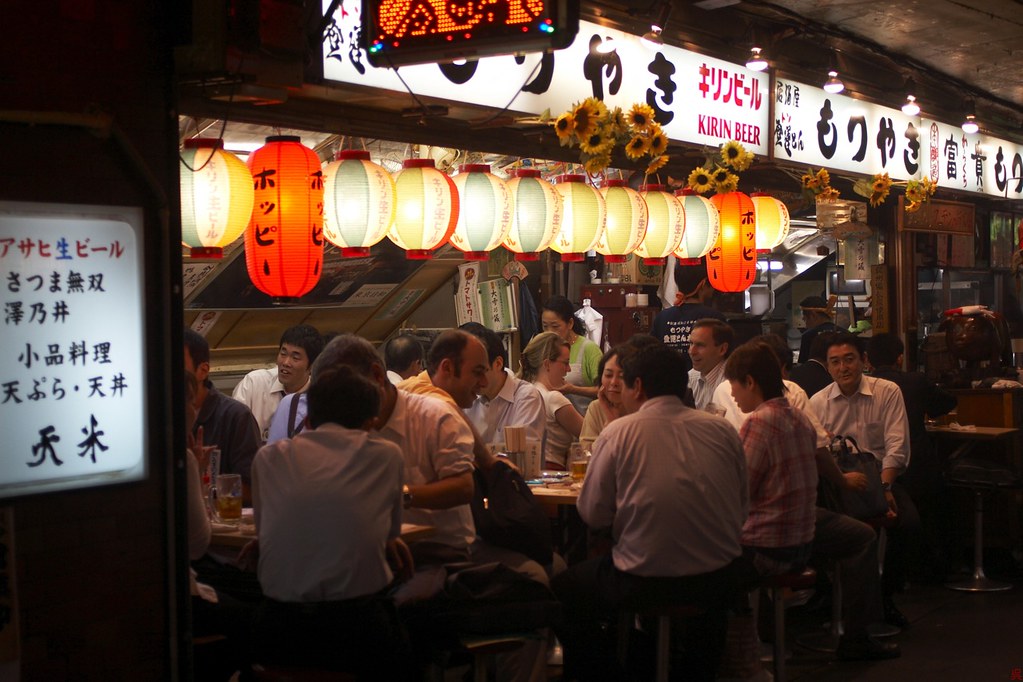
And when it comes to restaurants Japan has all kinds. Big ones. Small ones. And everything in between. And if high-end sushi is your thing then be prepared for the high cost and also the almost "religious" and "borderline formal" atmosphere. If you want less expensive and more lively sashimi or sushi restaurants then go to an izakaya!
Izakaya: The best variety of the local tastes and dishes are to be found in izakaya pub restaurants. An izakaya is like a gastropub or tapas bar that offers all kinds of traditional Japanese dishes. These are great people watching places and inexpensive (from Yen 3,000/person without alcoholic drinks). Many izakaya specialize in local sake and shochu. Izakaya bar restaurants originated from sake shops that allowed customers to sit on the premises to drink. "Modern" izakaya evolved during the Edo period (1603–1867), when the merchant class swelled and prospered alongside the dwindling samurai class. Izakaya are sometimes liked to taverns or pubs but they are really just restaurants with deep menus and usually a specialization in local sakes. Izakaya dining can be intimidating to non-Japanese because of the wide variety of menu items and the slow pace. Food is normally ordered slowly over several courses rather than all at once. The kitchen will serve the food when it is ready, rather than in the formal courses of Western restaurants. Typically, a beer is ordered when one is sitting down before perusing the menu. Quickly prepared dishes such as hiyayakko or edamame are ordered first, followed with progressively more robust flavors such as yakitori or karaage, finishing the meal with a rice or noodle dish to fill up.
Robatayaki: In Japanese cuisine, robatayaki (炉端焼き, literally "fireside-cooking"), often shortened to robata (ろばた in hiragana), refers to a method of cooking, similar to barbecue, in which items of food are cooked at varying speeds over hot charcoal. Many Japanese restaurants, both in Japan and abroad, specialize in this style of food preparation. Traditionally, the food consists of a combination of morsels of seafood and vegetables, but other kinds of food that are suitable for grilling may also be offered. The robata cooking style is different from other Japanese charcoal cooking in that it uses a wide, flat open fireplace in the style of an irori, rather than a shichirin or other type of charcoal cooking implement.
Kaiseki haute cuisine restaurants: Japan's Kaiseki haute cuisine restaurants are nearly always tatami seating (often with horigotatsu sunken floor seating) and also quite expensive (from Yen 12,000/person). Kaiseiki features many dishes in colorful or authentic Japanese ceramic dishes (of countless kinds) and nearly all the dishes are related to the seasonal delicacies of the "moment." These special dishes come in course after course and beyond the vegetables, fish is the protein of choice (never meat or rarely meat of any kind). Kaiseki developed from the Japanese tea ceremony but also from meditating Zen monks, who fought hunger by putting warm stones into the front folds of their robes, near their stomachs.
Traditional table settings: The traditional Japanese table setting has changed over the centuries. Before the 19th century, small individual box tables or floor trays were set before each guest. Larger, low tables that could seat entire families in the late 19th to early 20 century. The traditional Japanese table setting is to place a bowl of rice on the diner’s left and to place a bowl of miso soup on the diner’s right side at the table. Behind these, each okazu is served on its own individual plate. Based on the standard three okazu formula, behind the rice and soup are three flat plates to hold the three okazu; one to far back left, one at far back right, and one in the center. Pickled vegetables are often served on the side but are not counted as part of the three okazu. Chopsticks are generally placed at the very front of the tray near the diner with pointed ends facing left and supported by a chopstick rest, or hashioki.
Learn more! Or email me today at yourjapanprivatetours AT gmail DOT com. Or text me on Whatsapp @ +1-415-230-0579.
Regional delicacies and dishes from north to south
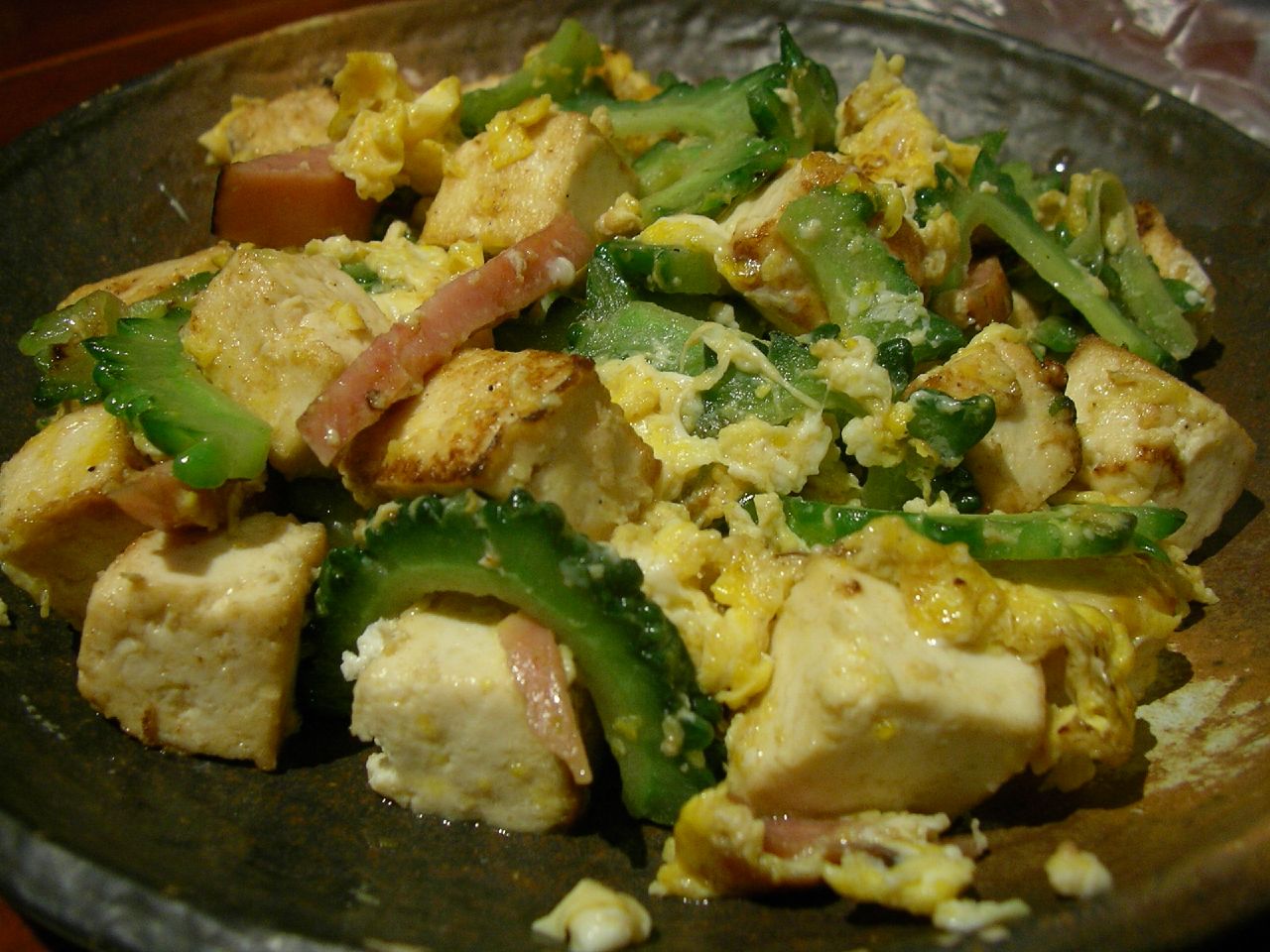
Hokkaido island: Ishikari hot pot nabe (いしかりなべ) ; Genghis Khan barbecue ( ジンギスカン /じんぎすかん); Squid ika somen noodles ( いか素麺 / いかそうめん).
Tohoku, north of Tokyo: Wanko soba noodles ( わんこ蕎麦 / わんこそば); Kirotanpo rice cakes (きりたんぽ ); Zunda mochi rice cakes made with sweet mashed soybeans ( ずんだ餅 / ずんだもち).
Kanto or Tokyo region: Pan-fried monjayaki savory pancakes( もんじゃ焼き / もんじゃやき); Yakitori grilled skewered chicken (焼き鳥 / やきとり); Grilled yakimanju sweet buns ( 焼き饅頭 / やきまんじゅう); Sumo wrestler chanko hot pot nabe ( ちゃんこ鍋 / ちゃんこなべ).
Chubu or Nagoya region: Katsu pork cutlet with miso sauce ( 味噌カツ / みそかつ); Grilled filleted unagi eel kabayaki ( 鰻の蒲焼 / うなぎのかばやき); Pickled fugu no ko nukazuke blowfish eggs ( 河豚の子糠漬け / ふぐのこぬかづけ).
Kansai or Osaka region: Kansai-style okonomiyaki savoriy pancakes ( お好み焼き / おこのみやき); Grilled takoyaki octopus balls ( たこ焼き / たこやき); Grilled akashiyaki octopus balls in egg batter ( 明石焼き / あかしやき); Soy marinated tekone zushi sushi rice( 手こね寿司 / てこねずし).
Chugoku or Hiroshima region: Fugu blowfish cuisine ( 河豚料理 / ふぐりょうり); Hiroshima-style okonomiyaki savory pancakes ( 広島お好み焼き / ひろしまおこのみやき); Kani jiru crab soup ( カニ汁 / かにじる).
Shikoku island: Bouze no sugata zushi whole butterfish with sushi rice ( ぼうぜの姿寿司 / ぼうぜのすがたずし); Sanuki udon noodles ( 讃岐うどん / さぬきうどん); Glowbelly jakoten fish cakes ( じゃこ天 / じゃこてん).
Kyushu island: Spicy karashi mentaiko cod or pollock eggs( 辛子明太子 / からしめんたいこ; Champon ramen noodles ( ちゃんぽん ); Berkshire kurobuta shabu-shabu pork hot pot ( 黒豚しゃぶしゃぶ / くろぶたしゃぶしゃぶ).
Okinawa islands: Goya chanpuruu stir fry with bitter melon( ゴーヤチャンプルー / ごーやちゃんぷるー); Ikasumi jiru squid ink soup(イカスミ汁 / いかすみじる ); Taco Rice — Tako Raisu( タコライス / たこらいす).
- An overview of Japanese cuisine for tourists
- Japanese restaurant styles from izakaya to kaiseki haute cuisine
- Regional delicacies and dishes from north to south
- Main Japanese cuisine types from A to Z
More information on local specialities on Japan's main islands (just scroll down and click on your island of choice).
Main Japanese cuisine types from A to Z
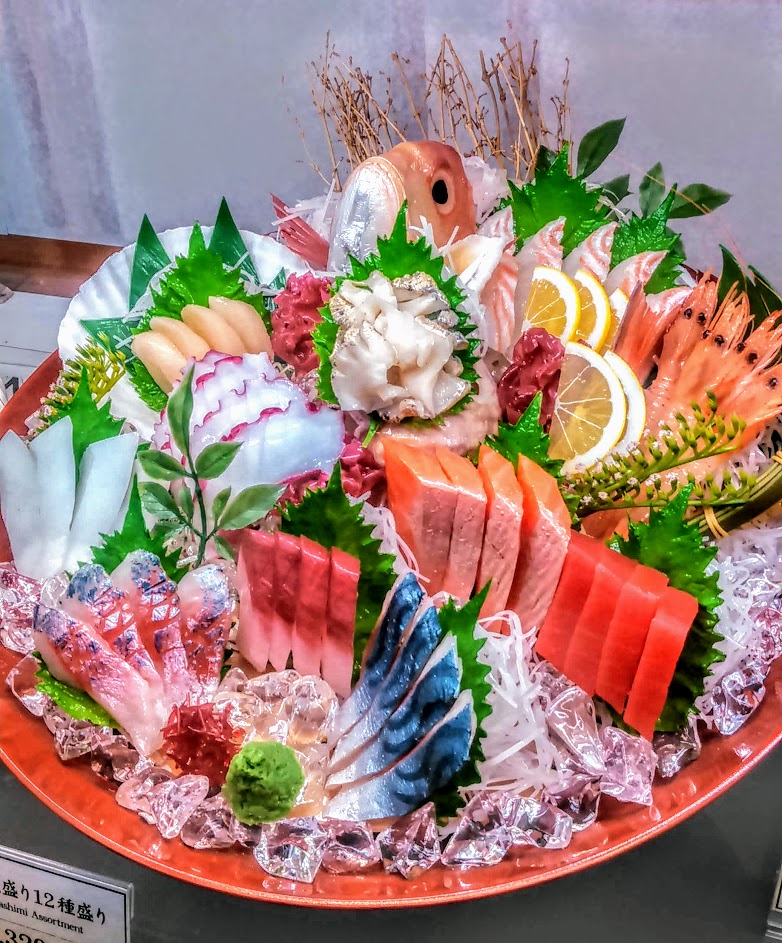
Donburi rice bowls: Donburi or "rice bowl" cuisine is inexpensive and fast and best suited for lunch during tours (soba noodles are also perfect for lunch). Common donburi options include tempura shrimp, mackerel or saba, chicken, and vegetables or seaweed. Costs range from Yen 800 to Yen 1,200.
Kaiseki haute cuisine: Kaiseki is a highly evolved high class Japanese cuisine that developed from the tea ceremony. Meat is rarely featured in kaiseki. Fish and vegetables are the common ingredients. If you stay in a traditional ryokan dinner is almost always kaiseki style. The meal consists of a sequence of small dishes that are artistically arranged and generally chosen for the ingredients of the season (every month is different). Kaiseiki can be extremely expensive and generally meals start from Yen 10,000/person, ranging up to Yen 25,000/person. Vegetarian kaiseki or Buddhist monk cuisine is also an option.
Kobe Beef or wagyu beef: Wagyu is the generic name for the four Japanese beef cattle breeds: Matsuzaka beef, Kobe beef, Yonezawa beef, Ōmi beef, and Sanda beef. Wagyu beef is expensive, super tender, fatty (marbled), and thus unique. A wagyu beef meal usually starts at Yen 10,000/person but can go as high as Yen 30,000/person.
Korean cuisine: Nearly 90% of Japan’s foreign population are of Korean descent and Korean barbeque style “yakiniku” restaurants are very popular and fun. Yakiniku or “grilled meat” (mostly beef) is prepared on iron grills and includes a wide variety of vegetables. It is also a cuisine where you do the cooking. Prepared raw ingredients (usually a set menu option) are brought to the table which is a large metal grill plate. The grilled ingredients are dipped in sauces known as tare before being eaten. Yakiniku is not expensive (from Yen 4,000/person).
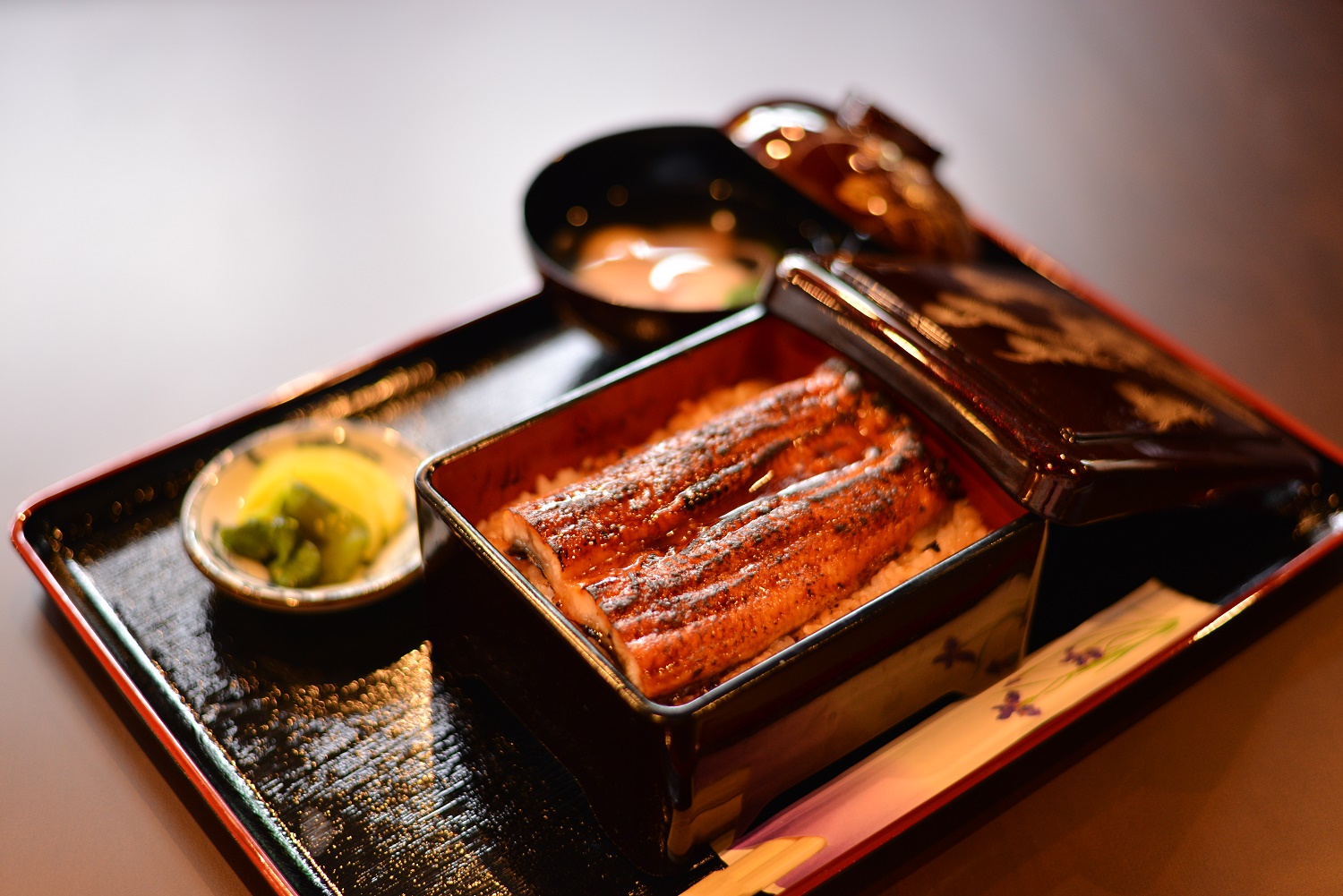
Kushiyaki: Kushiyaki is skewered food that is grilled (often on charcoal). It can include anything from chicken and beef to all kinds of vegetables. Kushiyaki is not expensive. Yakitori (see below) is a kushiyaki form where the meat is limited to chicken only. For the best experience sit at the bar counter so you can watch the chefs in action.
Nabe or hot pot cuisine: Nabemono cuisine is a hearty way to feed your hunger during the cold days of winter. Everything is prepared right at your table which means that you are the cook and the guest, which is especially fun for groups of friends or people who want to get to know each other better. When your nabe meal begins, you will notice a big earthenware pot on your table, set over a gas burner. Then, a fairly large tray of ingredients will appear at your table: fresh fish, shrimp, meats, different kinds of green vegetables and carrots, tofu, and mushrooms. When the water starts to boil, put in the hardest things, the things that take the longest to cook and then, a bit later, add the more delicate stuff. Put the lid on and bring it all to a boil and then, and this is important, turn the flame down and begin eating. Remember, to check what is happening in the pot; the key is not to overcook anything; the vegetables should still be firm when ready not soft and mushy!
New Year Osechi (and end of year) cuisine: End-of-the Year & New Year Foods: Toshikoshi Soba: On New Year’s Eve, many Japanese people, on their way to the temple, eat toshikoshi soba: the soba that will “carry you over into the New Year.” Soba noodles are believed to help you have a longer life and also to help you keep your money longer! Osechi Ryori: The main dishes of the traditional osechi New Year’s tray, prepared with much hard work by the women of the house, are symbolic of many good things. Herring roe symbolize fertility. Shrimp, with their bent back, stand for the chance to live a long life, until our own backs bend. The many-holed lotus root symbolizes premonition, or the ability to see through to the "other side." Black beans are for hard work. Kombu kelp symbolizes happiness and delight. Pink and white (auspicious colors in Japan) kamaboko are also part of the osechi tray; some, when sliced, reveal a picture of Mt. Fuji, sunrise, cranes or bamboo leaves, all symbols of happiness. Vegetables are cut to resemble plums (happiness), chrysanthemums (longevity) or pine cones (prosperity). Though many still take the time to prepare their own Osechi Ryori at the year's end, even the most rare New Year foods can now be bought at department stores and specialty shops.
Oden winter boiled treats: Oden is a kind of stew that is extremely popular during the winter months in Japan. Oden is so popular in the cold months of the year that most convenience stores serve it. Oden keeps for a long time, just as many vegetarian winter soups do. Oden is perfect for those of us who are picky and like unusual combinations of tastes and textures. With oden everything is in a big metal pot of kelp and soy broth. Oden is about taking your time (eating a bit, chatting a bit and then eating a bit more) and appreciating the fact that you are warm inside though it may be very cold outside. Everything in oden means: turnips, daikon radishes, potatoes, rubbery konnyaku, tofu (deep fried usually), boiled eggs, and chikuwa tubes (made of fish paste). To add heat, use a little of Japan’s super hot karashi mustard.
Okinawan: Okinawan food is not easy to define but the flavors are bold and surprising. It is more Asian than anything else you will find in Japan and here’s why. The islands that make up Okinawa were once part of an independent state called the Ryukyu Kingdom (15th-19th century), an important trading hub linking China, Japan, Korea and Southeast Asia. Kyoto has one Okinawan restaurant that is exceptional and caters to vegans and all food allergies. Highly recommended but so popular that advanced reservations are a must! Nut allergy caution: Okinawan cuisine uses peanuts and sesame nuts!
Learn more! Or email me today at yourjapanprivatetours AT gmail DOT com. Or text me on Whatsapp @ +1-415-230-0579.
Okonomiyaki: Okonomiyaki is a savory pancake style of cuisine that is perfect for families and fun as you can prepare your own on your griddle table. The menu is deep and there are all kinds of toppings and ingredients to choose from everything from meats to cheese. Okonomiyaki is strongly associated with the Kansai (Kyoto and Osaka) or Hiroshima but is now widely available all over Japan. Tokyo’s okonomiyaki variation is called 'monjayaki.' Inexpensive (from Yen 1,000/person) and super fun if you prepare it yourself.
Ramen: Ramen noodle cuisine has become famous all over the world. It consists of Chinese-style wheat noodles served in a rich meat or fish-based broth, flavored with soy sauce or miso. The meat is nearly always thinly sliced pork. Every region in Japan has its ramen style and many restaurants are ranked. It is inexpensive and fast and available until late at night. Vegetarian caution: Ramen broth usually contains meat products and sometimes peanuts and sesame nuts!
Sansai mountain vegetables: In May across central Japan, people look forward to eating and savoring sansai or the "fruit of the mountains." Sansai mountain vegetable delicacies include warabi (bracken fern heads), zenmai (flowering fern), seri (Japanese watercress), yomogi (mugwort), kinome (the first leaves of sansho, or Japanese pepper), fuki (bog rhubarb), and takenoko (new bamboo shoots). Sansai mountain vegetables are usually lightly boiled and then flavored with mustard, sesame seed, vinegar, soysauce, and sweet mirin sake.
Shabu-shabu beef dipping cuisine: Shabu-shabu uses thin slices of beef and vegetables briefly cooked in a clear boiling broth, and then dipped into ponzu (a vinegar based dip), or gomadare (made from sesame paste).
Soba & udon noodles: Soba buckwheat noodles are served hot and cold (in summer ). This cuisine is healthy, inexpensive (from Yen 800/person), fast and perfect for lunch during a tour. Toppings include thinly chopped scallions, shrimp or vegetable tempura, mackerel, and aburaage (deep-fried tofu. Every area has its own variations and spice options. Udon noodles (thicker and made only from wheat floor) are usually an option in any soba restaurant.
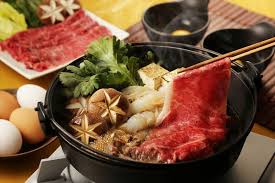
Sukiyaki: Sukiyaki is a hot pot or nabemono style of cuisine that is especially popular in the cold season. Thinly sliced beef is simmered in the hot pot at your table together with vegetables. Cooked ingredients are then dipped in a small bowl of raw, beaten eggs.
Sushi & sashimi: Sushi is probably Japan’s most famous food export. It’s basically vinegared rice, combined with all kinds of ingredients (mostly fish but also egg and cucumber). Sashimi, on the other hand, is thinly sliced raw fish, and less popular with foreign travelers to Japan. Good sushi is on the menu in many izakayas (see above), in small local neighborhood sushi restaurants (from Yen 5,000/person), on conveyor belts, and in the super high end specialty restaurants (from Yen 10,000/person and up . . .).
Learn more! Or email me today at yourjapanprivatetours AT gmail DOT com. Or text me on Whatsapp @ +1-415-230-0579.
Tea ceremony cuisine: Tea kaiseki or cha-kaiseki refers to the meal that is served during the Japanese tea ceremony. In a formal tea ceremony, cha-kaiseki precedes the serving of the whipped maccha green tea. Typically, this cuisine has three parts: soup, three side dishes and rice. To experience this unique cuisine, you will require special reservations at a select number of places that specialize in the tea ceremony.
Tempura: Tempura is a popular and healthy seafood and vegetable cuisine in which the ingredients are first dipped in batter and then deep fried in a light vegetable oil. The dish was influenced by fritter-cooking techniques introduced by Portuguese (the first Westerns to reach Japan, in the 16th century). Tempura is dipped in salty or sour sauces before eating. Shrimp tempura is often part of soba buckwheat or donburi rice bowl cuisine.
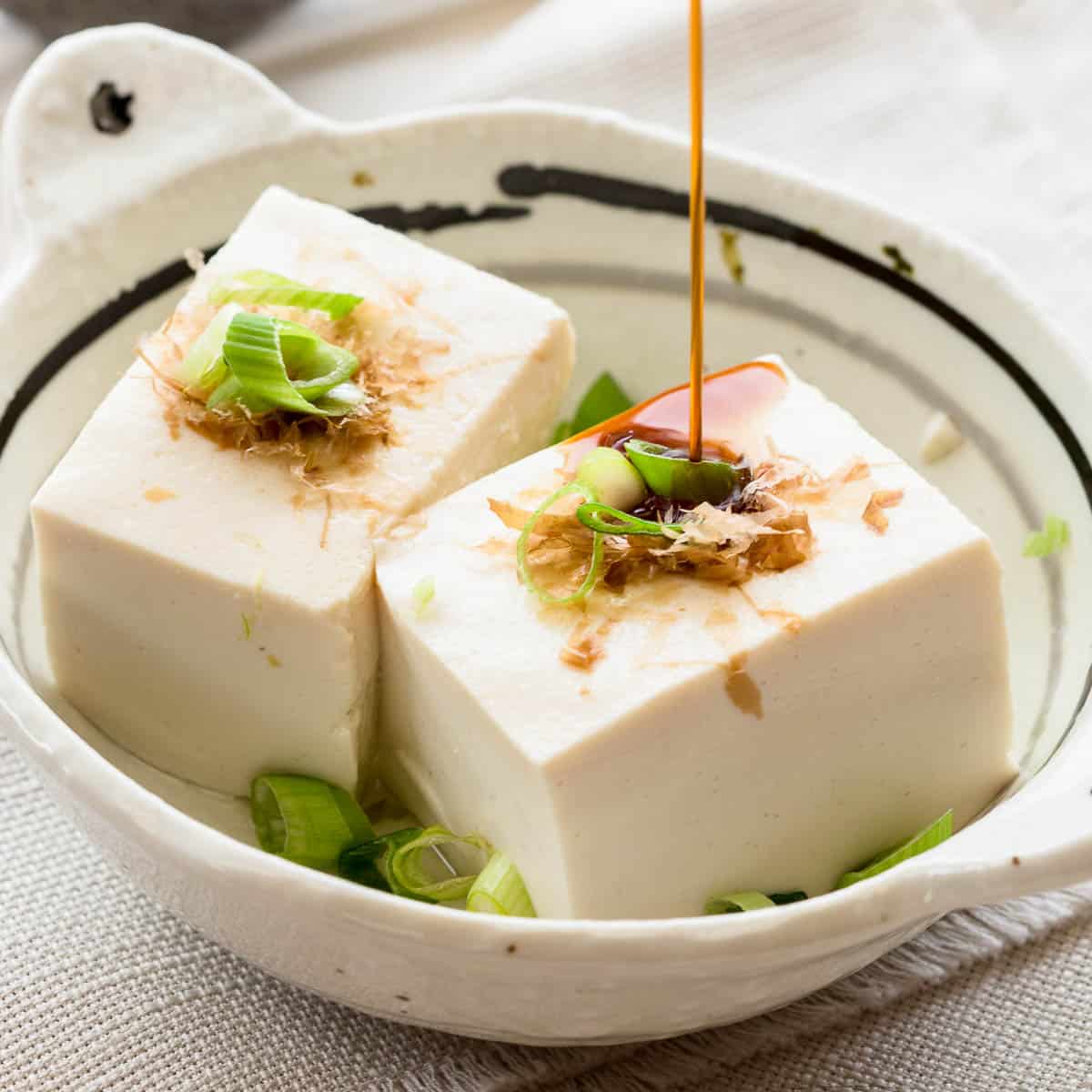
Teppanyaki: Teppanyaki is a style of Japanese cuisine prepared on an iron griddle. Ingredients include beef, shrimp, and yakisoba noodles. Modern teppanyaki grills are typically propane-heated flat surface grills and are widely used to cook food in front of guests at restaurants. Teppanyaki is usually a set course meal starting from Yen 5,000/person (and up!).
Tofu kaiseki haute cuisine: Tofu kaiseki is based around tofu in all its different forms (there are many!). It is a high-class meal and not cheap (from Yen 4,000/person). It is very healthy, and the ingredients change with the season. Every dish is served in different traditional ceramics (often by local potters).
Tonkatsu pork cutlet: Tonkatsu or pork cutlets are covered in bread crumbs and then deep fried; the two main types are fillet and loin. Tonkatsu was introduced to Japan at the end of the 19th century from Europe.
Unagi or river eel: Unagi river eel is grilled on charcoal and usually served on a bed of rice. It is especially popular in summer as it is said to cool the body. There are unagi specialty restaurants in Tokyo and Kyoto, but you can also find this dish on the menu in most izakaya restaurants as well as donburi restaurants. It is not expensive (from Yen 1,500/person).
Vegetarian: Vegetarians rejoice. Though most Japanese traditional foods have traces of fish in the broth and in some sauces, there are many vegetarian options in contemporary Japan. Everything from Western vegan vegetarian to vegetarian sushi and vegetarian onigiri rice balls and triangles. And don't forget the Chinese Zen temple in Uji or many other temple settings across Japan (Zen monks don't eat meat!). And then there are all the Indian restaurants!
Wagashi tea ceremony sweets: Traditional Japanese sweets are known as wagashi. Ingredients such as red bean paste and mochi are used. More modern-day tastes includes green tea ice cream, a very popular flavor. Almost all manufacturers produce a version of it. Kakigōri is a shaved ice dessert flavored with syrup or condensed milk. It is usually sold and eaten at summer festivals. A dessert very popular amongst children in Japan is dorayaki. They are sweet pancakes filled with a sweet red bean paste. They are mostly eaten at room temperature but are also considered very delicious hot. ADD ONE FAMOUS IN KYOTO AND ONE FAMOUS IN TOKYO.
Yakiniku: Yakiniku or "grilled meat" is relatively new to Japan as Buddhism prohibited the consumption of animal meat until about 1870. Yakiniku is strongly associated with Korean-derived cuisine (Korean barbecue; see above). Countless Korean restaurants opened in Osaka and Tokyo after WWII when the Korean War began in earnest. In a yakiniku restaurant, diners order prepared ingredients, which are cooked by the diners on a grill built into the table. The ingredients are subsequently dipped tare sauces. The most common sauce combines soy sauce with sake, mirin, sugar, garlic, and sesame. Today, yakiniku means grilled beef and offal and vegetables. Grilled on gridirons or griddles over charcoal that has been carbonized (and in cheaper places over gas). Nut allergy caution: Yakiniku sauces are made with sesame nuts!
Yakitori skewered chicken: Yakitori grilled chicken is super popular and inexpensive. Plus, yakitori restaurants are a great people watching venue. The chicken (local free range) is skewered on bamboo kushi skewers. The skewers are barbequed on charcoal and then dipped in tare sauces or sprinkled with salt.
Zen cuisine or shojin ryori for Buddhist monks: Shojin ryori is the vegetarian diet prepared for Buddhist monks using only vegetables, beans, and grains. There are more than a few Buddhist temples where worshippers spend the night and eat only shojin ryori as is the rule in such temples. In Kyoto (and other places where there are high concentrations of Zen temples) you can find Zen vegetarian cuisine for not too much money or a small fortune. So, don't be naive. Be sure you understand the cost before ordering your meal, please.
Learn more! Or email me today at yourjapanprivatetours AT gmail DOT com. Or text me on Whatsapp @ +1-415-230-0579.
Return to the Japanese culture essay index.
- An overview of Japanese cuisine for tourists
- Japanese restaurant styles from izakaya to kaiseki haute cuisine
- Regional delicacies and dishes from north to south
- Main Japanese cuisine types from A to Z
Content by Ian Martin Ropke, owner of Your Japan Private Tours (est. 1990). I have been planning, designing, and making custom Japan private tours on all five Japanese islands since the early 1990s. I work closely with Japan private tour clients and have worked for all kinds of families, companies, and individuals since 1990. Clients find me mostly via organic search, and I advertise my custom Japan private tours & travel services on www.japan-guide.com, which has the best all-Japan English content & maps in Japan! If you are going to Japan and you understand the advantages of private travel, consider my services for your next trip. And thank you for reading my content. I, Ian Martin Ropke (unique on Google Search), am also a serious nonfiction and fiction writer, a startup founder (NexussPlus.com), and a spiritual wood sculptor. Learn more!